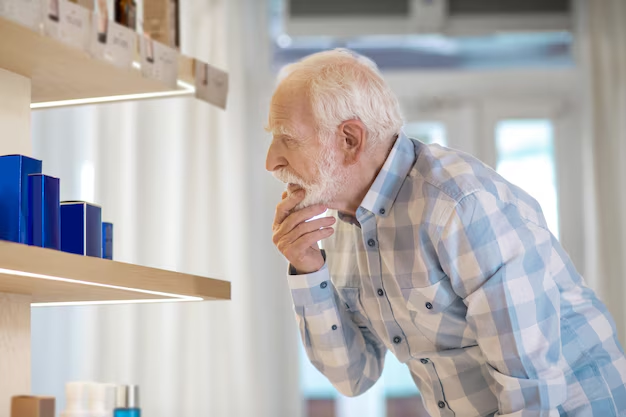Uncover the Hidden: Key Symptoms of COPD You Should Recognize
Living with Chronic Obstructive Pulmonary Disease (COPD) can be an overwhelming experience. Understanding its symptoms, however, is crucial to managing life with this condition effectively. This guide will cover everything from the obvious to the subtle signs of COPD, along with practical tips and insights that can help navigate this challenging disease.
What is COPD?
While COPD may sound like an abstract medical term, it fundamentally affects breathing and respiratory function. This chronic condition includes diseases such as emphysema and chronic bronchitis. Both conditions result in obstructed airflow from the lungs, making every breath feel like a battle. Let’s dive into the symptoms that signal this condition.
Recognizing the Early Symptoms of COPD
Early detection can be a game-changer in managing COPD. Recognizing these symptoms early can lead to more effective interventions and a better quality of life. Here are some early signs to watch out for:
- Shortness of Breath 🏃♂️: Experiencing unusually breathless moments during everyday activities like walking or climbing stairs.
- Chronic Cough 🗣️: A persistent cough that doesn’t seem connected to any immediate illness.
- Increased Mucus Production 🦠: Noticing more mucus than usual can indicate an issue.
- Frequent Respiratory Infections 🤧: Repeated colds or infections may signal a weakened respiratory system.
These early symptoms might be subtle but identifying them promptly can offer valuable leads towards seeking professional assistance.
Progressing Symptoms and Their Impacts
As COPD progresses, symptoms can evolve and become more pronounced. Understanding these can help in recognizing when the condition is advancing:
Breathlessness and Fatigue
Breathlessness may progress from mild to severe, and activities that once seemed normal might become exhausting. This often leads to chronic fatigue, as the body uses more energy to perform basic tasks.
Wheezing and Chest Tightness
Some individuals report wheezing, a high-pitched whistling sound when breathing. This is due to airflow restriction in the lungs. Alongside wheezing, a feeling of tightness in the chest is common.
Swelling in Ankles and Feet
Although surprising, COPD can cause edema, or swelling, particularly in lower extremities like ankles and feet. This results from the heart working harder to pump blood through stiffened lung tissues.
Weight Loss
Weight loss and muscle wasting (sarcopenia) occur in some people with COPD. The prevalence of inflammation in the body significantly contributes to this symptom.
Frequent Hospital Visits
Experiencing frequent exacerbations that lead to hospital visits may indicate the disease is advancing. Exacerbations are when symptoms suddenly worsen and require additional treatment.
Understanding Exacerbations: Warning Signs and Prevention
COPD exacerbations are pivotal moments where the disease intensifies. Identifying the warning signs and taking preventive measures is critical.
Signs of an Exacerbation:
- Increased Shortness of Breath 🚨: Noticeable and escalating difficulty in breathing.
- Changes in Mucus: Variations in color, thickness, or amount can indicate an exacerbation.
- Persistent Cough 🛑: A more incessant cough that disrupts daily activities.
- Extreme Fatigue: Fatigue beyond normal levels that might interfere with daily life.
Prevention Tips:
- Stay Vaccinated 💉: Maintaining up-to-date vaccinations, especially for flu and pneumonia, can help in reducing risks.
- Avoid Pollutants 🌫️: Limit exposure to air pollutants, irritants, and smoking areas.
- Regular Check-Ups 👩⚕️: Routine health visits can ensure early intervention if an exacerbation is imminent.
- Healthy Lifestyle Choices 🍎: Nutrition and regular, suitable exercise are vital in maintaining lung health.
Practical Insights: Living with COPD
Understanding symptoms is part of the battle, but incorporating practical steps can provide ease and control over day-to-day challenges.
Breathing Techniques
Learning and practicing breathing techniques can improve overall lung efficiency. Techniques such as pursed-lip breathing and diaphragmatic breathing are highly recommended.
Home Adjustments
- Humidity Control 🌦️: Using humidifiers to maintain optimal humidity can help ease breathing in dry climates.
- Air Quality Management: Ensure air filters are clean and air purifiers are used to reduce indoor pollutants.
Emotional Resilience
Coping with COPD is not only physically challenging but emotionally taxing as well. Building emotional resilience through support groups or therapy can have significant benefits.
Pharmacological Management
While medical advice should always be sought from healthcare professionals, understanding general patterns in medication can aid individuals. Bronchodilators and inhaled steroids are commonly utilized to manage symptoms effectively.
Key Takeaways and Actionable Tips
To sum up, here are key takeaways and action steps to aid those living with COPD:
- 👂 Monitor Your Body: Be vigilant about changes in your symptoms.
- 💡 Educate Yourself: Stay informed about your condition and potential triggers.
- 🏠 Modify Environment: Adjust living spaces to support easier breathing.
- 📝 Regular Consultations: Keep up with medical appointments and follow professional guidance.
- 🚶 Maintain Activity: Engage in suitable physical activities to help maintain lung capacity.
- 🤝 Seek Support: Emotional and peer support can make a significant difference in quality of life.
Final Insight: Empowered Living with COPD
Managing COPD requires attentive observation of symptoms, informed actions, and an adaptable mindset. While COPD may impact many aspects of life, proactive steps and an informed understanding of its symptoms can provide a pathway to improved living conditions. Embrace a lifestyle that prioritizes health, informed self-care, and resilience for a smoother journey with COPD.
By delving into comprehensive symptoms’ understanding and interventions, individuals can take empowered steps towards managing COPD, transforming challenges into possibilities.
